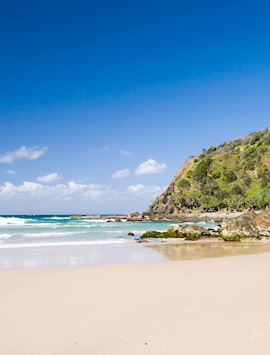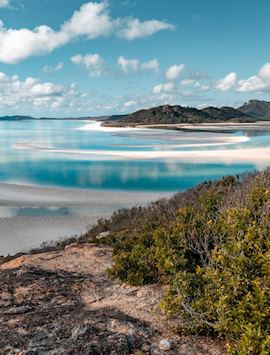By Australia specialist Lee
Queensland is home to both ancient rainforest — so old it makes the Amazon look like a mere whippersnapper — and the world’s largest coral reef system, the Great Barrier Reef. It’s hard to talk about this northeastern Australian state without reaching for its megawatt stars, but they’re famous for a reason.
Both sites are incredibly rewarding to explore, and I have lots of suggestions for imaginative, less obvious ways to encounter these ecosystems that would particularly suit families. And there are so many more dimensions to Queensland, too, from off-road adventures on sand-bar islands to glow-worm spotting in mountaintop national parks.
Your trip can take on many shapes. I’ve taken inspiration from this family trip in South Queensland and this reef-and-rainforest adventure, but all the places I mention below can be woven into a road trip heading north through the state. It’s also sometimes possible to get around via short flights, too.
Lamington National Park for families
The road winds around the mountains, the folds of the surrounding McPherson Range rising up to meet you as you climb. You eventually reach the summit of Green Mountains and emerge into a grove of trees lined by subtropical rainforest that’s so cloaking it’s hard to imagine humans ever setting foot in it. And then you’re here, at O’Reilly’s Rainforest Retreat, a much-loved, family-owned institution of a resort at the literal pinnacle of Lamington National Park.
I think it’s a wonderful place for families — welcoming, clearly dedicated to conservation, and lightly educational (there are reference books and pictures everywhere showing wildlife you can look out for). The communal areas aren’t the most modern-looking, but it’s also endearingly Scout-camp-like in places. That said, there’s a spa with a hot tub by a picture window if you do wish to slip away for some alone time.
There are oodles of ways to explore the rainforest here, some of which are included in your stay. Think guided walks, a flying fox zipline, Segway safaris, plus evening treats of marshmallows and hot cocoa around the campfire. I loved the early-morning bird walk, where I developed a deep and everlasting crush on one of the locals, a rather handsome satin bowerbird. He was proudly showing off his arched woven bower, which was scattered with scavenged blue objects, from bottle tops to ribbons (these birds are particularly attracted to blue).
Children might also enjoy the nocturnal glow-worm tour. In a small group, your naturalist guide takes you in a 4x4 to a remote creekbank deep in the rainforest. As dusk gathers, you’ll rumble past clearings where pademelons, kangaroo-like marsupials, are playing. You’ll walk into the forest with flashlights, perhaps spying a ringtail possum acrobatting through the trees or hearing the swish of freshwater eels, before you reach a row of creekside benches.
Then, it’s flashlights off, and you sit in the dark as a different kind of light emerges — the soft greenish twinkles of glow worms. They bejewel the soil bank opposite you, their lights reflecting in the creek water, as if mimicking the piercingly clear night sky above.
Family-friendly places to stay in Lamington National Park
There’s a good choice of rooms at O’Reilly’s, which have self-catering facilities (stock up in the nearest town, Canungra, before you get here). You can get casual, informal meals in the resort’s Rainforest Café, too, and it also does a hearty buffet breakfast.

Family-friendly places to stay in Lamington National Park
There’s a good choice of rooms at O’Reilly’s, which have self-catering facilities (stock up in the nearest town, Canungra, before you get here). You can get casual, informal meals in the resort’s Rainforest Café, too, and it also does a hearty buffet breakfast.
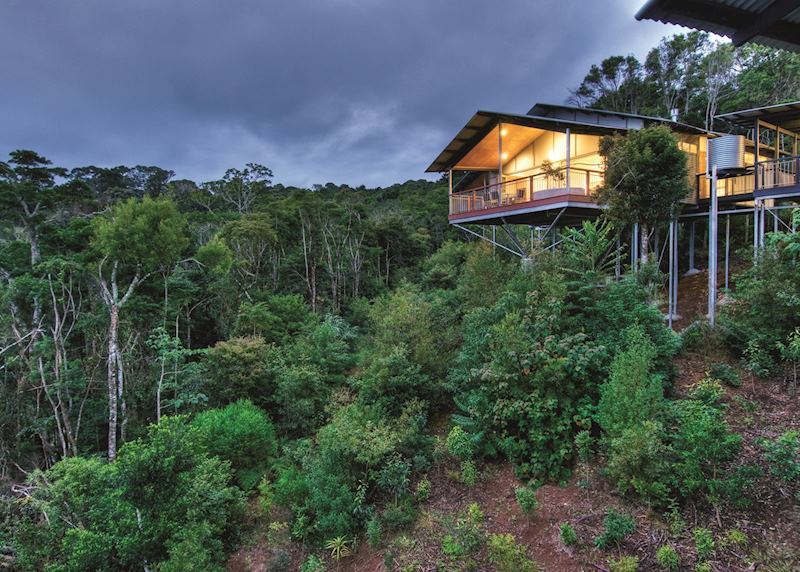
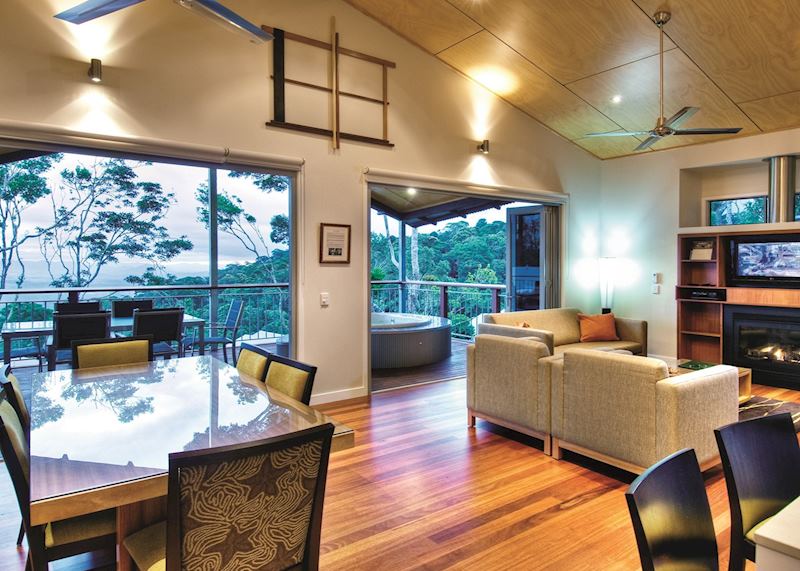
Noosa & the Sunshine Coast for families
Soft bronze sands, small waves (hello, first-time surfers), and timber boardwalks looping around coastal eucalypt forest that cradles wild koalas. A main street that’s brimming with artsy boutiques and unpretentious, family-friendly restaurants, plus a much-loved surf club that’s ideal for a drink or an evening meal. There’s even a small chocolate factory that produces whimsical, of-the-region creations, like mango macadamia chocolate bars. It’s easy to see why Noosa appeals to families.
It’s a three-hour drive to Noosa from Lamington National Park, but there are also beachside stops on the way to break up the journey. You could also pause at the Glass House Mountains, which are volcanic humps in Queensland’s hinterland that offer some great picnic spots.
Noosa makes a great base for exploring some of the singular places on the Sunshine Coast, like the Noosa Everglades, a wetland ecosystem that’s best explored by kayak. I’ll also arrange for you to visit K’gari (formerly known as Fraser Island), the world’s largest sand island that lies just north of Noosa, a short ferry ride across from Inskip Point. Only around 150 people live there, and there are no roads.
You’ll need to travel by 4x4, and a guided tour is the best way of uncovering the isle’s varied sights and environments. It’s buffeted by voluminous dunes and sprawling mangroves, with a forested, wild interior where scribbly gums and eucalypts give way to the cycads and vines of rainforest (you can tell when you cross into rainforest because the temperature immediately drops). Guides will share with you the history of the isle, from the Butchulla people, for whom K’gari was home, to the remnants of logging activity.
I find K’gari bewitching, from the spearmint-blue waters of Lake McKenzie, with its polenta-like sand, to the blissfully cool Eli Creek, where you can have a lazy-river-style float, to the dramatic rusting skeleton of the SS Maheno, which beached here in the 1930s. And there’s the chance to spot wild dingoes, which roam the island. Even from a distance, I think spying one of these lean, golden-pelted dogs is exhilarating.

Family-friendly places to stay in Noosa
Seahaven Noosa is the place to be for families, in my book. Its apartments overlook Noosa’s Main Beach, have self-catering facilities, but are also an easy walk from Hastings Street, Noosa’s heart. There are also three pools and an alfresco area you can use if you’d like to have your own barbecue.
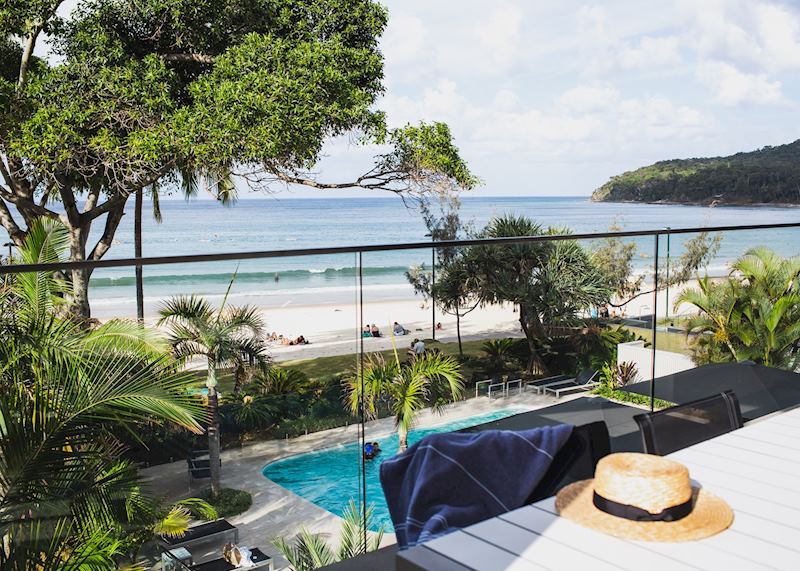
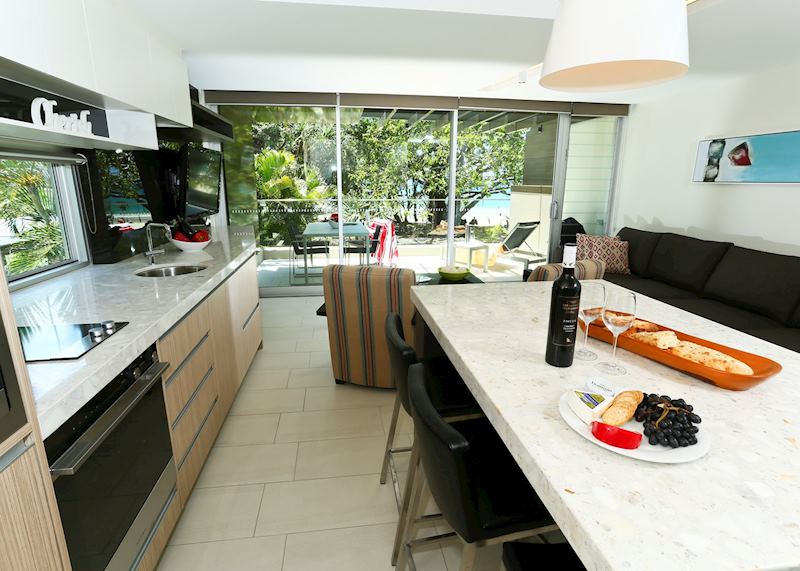
The Whitsundays for families
The Whitsunday Islands sit on the central stretches of the Great Barrier Reef. The contrast between their white silica sands and bright azure Coral Sea makes them seductively photogenic, but they’re also a great base for families looking to make the most of their time on the reef. Hamilton Island is best set up for families, and easily reached by ferry from Airlie Beach, or a short flight from Brisbane or Cairns.
While it can feel resort-like in places, Hamilton is very laid-back. It's mostly unspoiled native bushland is criss-crossed with walking trails. While there, you can make the most of child-friendly Catseye Beach, where peaceful, shallow waters lend themselves to paddleboarding and kayaking. Snorkeling and whale-watching trips also head out from the island. If you’re lucky, you might see humpbacks breaching out of the water as they make their way up the coast between July and October.
From Hamilton Island, you can take a trip to Hardy Reef for two kinds of novel one-night stays. Both take place on a pontoon — one sees you sleep on deck, en plein air, on a cozy bed with a duvet and netting. There’s a palpable buzz while everyone settles into their pods, like the excited chatter of children at their first sleepover (and that’s just the adults). At night, you can look up at the Southern Cross and Milky Way, while at dawn, you’ll have a front-row seat as the sun rises over the reef in a great tangerine wash.
Alternatively, you can choose to sleep underwater, in a room with floor-to-ceiling windows, watching inhabitants of the reef drift by. Be sure to listen out for whalesong. Whichever type of stay you choose, you have the bonus of being able to slip into the water for an early-morning or late-afternoon snorkel both before day trippers arrive and after they’ve left. Dinner will also be served to you — expect both sophisticated canapés and child-pleasing dishes.
Family-friendly places to stay in the Whitsundays
Hamilton Island Reef View Hotel has family suites with ocean views. There’s plenty of water-sports equipment, and snorkeling gear is included in your stay.
For something a little more out of the ordinary, you could stay on Lady Elliott Island, where you’ll be completely off-grid. You can read more about this experience in our guide to the Great Barrier Reef, but one highlight of a stay here is the chance to snorkel with manta rays. Between November and April, you might also see loggerhead turtles “body pitting” (aka extreme spring cleaning in preparation for nesting and egg laying). You can even help the island’s staff to GPS-mark any nesting sites and egg chambers you might spot.

Family-friendly places to stay in The Whitsundays
Hamilton Island Reef View Hotel has family suites with ocean views. There’s plenty of water-sports equipment, and snorkeling gear is included in your stay.
For something a little more out of the ordinary, you could stay on Lady Elliott Island, where you’ll be completely off-grid. You can read more about this experience in our guide to the Great Barrier Reef, but one highlight of a stay here is the chance to snorkel with manta rays. Between November and April, you might also see loggerhead turtles “body pitting” (aka extreme spring cleaning in preparation for nesting and egg laying). You can even help the island’s staff to GPS-mark any nesting sites and egg chambers you might spot.
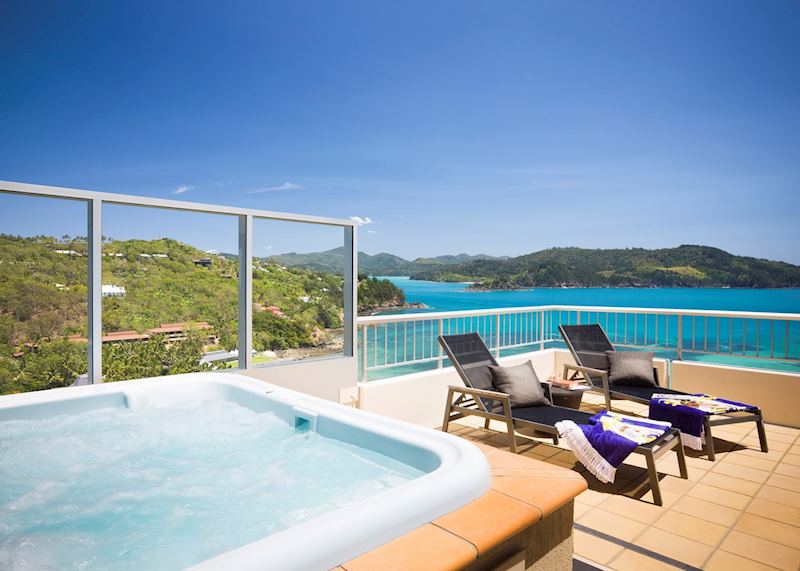
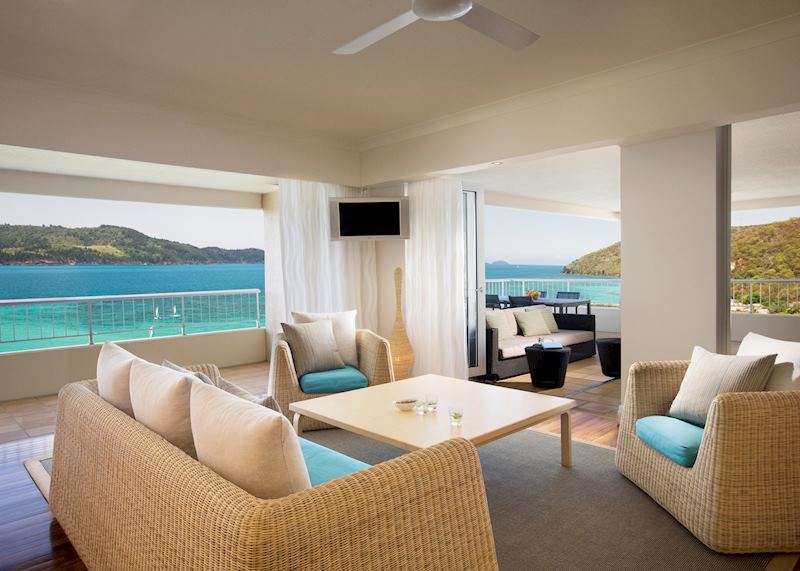
Port Douglas for families
I once worked with someone who was completely head over heels with Port Douglas (spoiler: she ultimately moved back there), and it’s easy to see why: an inviting, shady town with an easy-going café culture, a coconut-palm-bordered beach, and access to some of the best-preserved parts of the Great Barrier Reef, the outer reef. It’s also about 90 minutes by car to the Daintree Rainforest. Voilà, two of the planet’s most complete ecosystems on your doorstep. You can get there by flying into Cairns from Hamilton Island, which takes just under five hours (with one stop).
One of the best reef trips from Port Douglas for families is a day’s cruise to the Low Isles, a pair of coral cays crested with tropical scrub and a once-manually-operated lighthouse.
It’s an ideal trip for families with children of different ages and swimming abilities because you have a lot of choice for how to experience the reef here. You can snorkel over corals and seagrass beds straight from the beach — something that’s rare when you’re this far north in Queensland — or explore them via a glass-bottomed boat. I still get a kick whenever I spot “Nemo”, aka orange and white clownfish, one of Queensland’s “Great Eight” octet of marine creatures.
There are also lots of lighter-hearted, novel, and child-friendly ways to experience the reef from Port Douglas. You can, for example, go exploring with diving helmets, which let you walk around on the seabed for a while, like something out of a Jules Verne novel.

Family-friendly places to stay in Port Douglas
Thala Beach Nature Reserve is my number one place for families here. It’s just ten minutes north of Port Douglas, and there’s a complimentary shuttle service. A pioneering ecolodge set in its own reserve, it has a private beach and a swimming pool made out of natural rock with a shallow end. There’s a restaurant that’s very accommodating to families, with the chance to watch birds splashing around in the birdbath as you dine, and the lodge also offers activities like stargazing and guided nature walks.
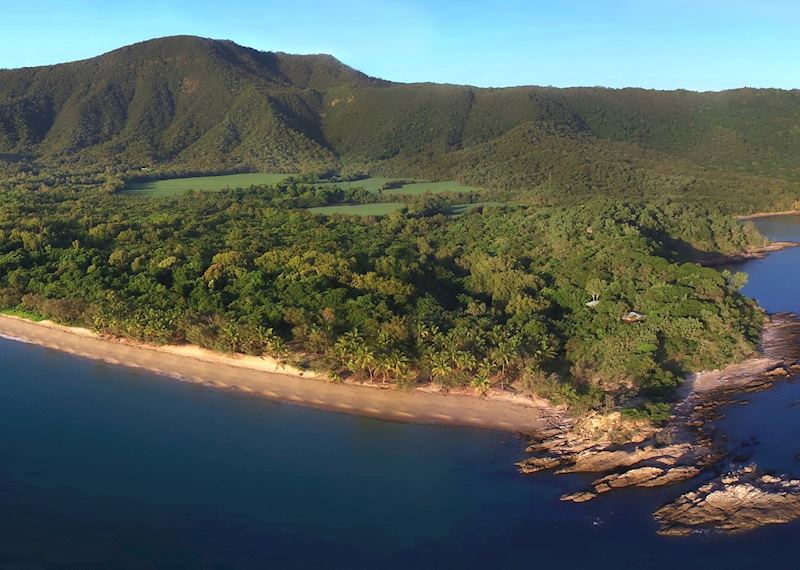
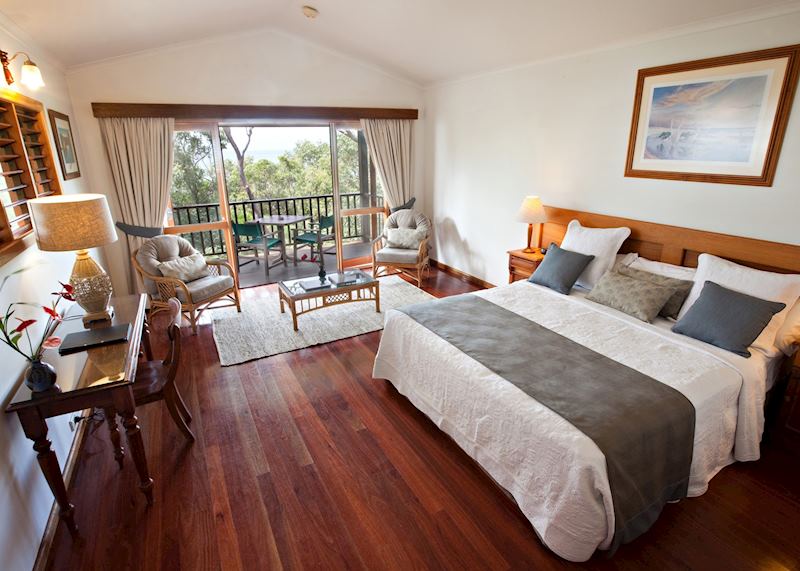
The Daintree Rainforest for families
I’ve noticed that when people step into the Daintree Rainforest for the first time, they often go quiet. There’s a hushed reverence for the place, like you’ve entered a great green cathedral. Vines and lianas unspool from the canopy far above, shafts of light pierce the huge, disc-like leaves of Australian fan palms, and a hulking great strangler fig squats over its host tree. And there are the sounds that usher you into this ethereal place, from the slightly manic “evil genius” laugh of the kookaburra to the rushing, urgent whisper of nearby, unseen waterways.
I’d highly recommend touring the Daintree with a local Kuku Yalanji guide. You’ll identify plants used for everything from bush medicine to soap, learn why termite mounds make accurate barometers, and spot endemic wildlife.
High on most visitors’ wish lists is the southern cassowary, a bird that always reminds me of Lewis Carroll’s fantastical Jubjub bird from his poem Jabberwocky, with its griffin-like taloned feet. You might hear the lively Dreamtime explanation for why this bird sports the helmet-like casque on its head. In fact, seeing the Daintree through the vivid lens of the Dreamtime (the Aboriginal way of interpreting their stories and history) is one of the best parts of this tour.
I personally spent a great day in the Daintree with Brandon, a Kuku Yalanji man who took me walking in Manjal Dimbi (Mossman Gorge). Crossing boardwalks and hanging bridges, we reached safe swimming holes, where I enjoyed ducking under waterfalls — a refreshing respite from the humidity. Then, in the afternoon, he took me spearfishing for mud crabs along the nearby coast (he made it look easy). We ended up at his parents’ house for a chat over tea and damper bread.
Meanwhile, families with an artistic flair might enjoy a hands-on class with Brian “Binna” Swindley, a local Kuku Yalanji artist. So, you won’t just walk in the Daintree, you’ll paint it too. These tours often begin with a short “Welcome to Country” ceremony, where you’ll be blessed by Kuku Yalanji elders before you enter the sacred ground of the rainforest. I think it’s a brilliant thing for children to be part of and for underlining the centrality of Indigenous culture in Australia.
Another fun way to experience the Daintree is to take the vintage-style Kuranda Scenic Railway. You’ll wind your way up a rainforested mountainside, passing waterfalls and Din Din (Barron Gorge) en route to the rainforest village of Kuranda. It’s pleasant to wander around its craft markets — I suggest stopping to buy a fresh coconut and drinking straight from the shell. Then, you can take the Skyrail Rainforest Cableway back down through the rainforest and over the gorge, giving you the bonus of ocean views on your way back.

Family-friendly places to stay in the Daintree Rainforest
Rather than stay in the Daintree itself, I’d recommend visiting it for a day or so from Port Douglas.
Alternatively, you could stay in Cairns, a 40-minute drive from the Kuranda Scenic Railway. This small city has a beachfront lagoon and parks, and a family-friendly feel in the daytime (before its bars get busy come evening). You can also embark on snorkeling tours of the inner reaches of the Great Barrier Reef from here.
Crystalbrook Riley has family rooms with interconnecting bedrooms, an outdoor pool with a shallow end, and it’s located right on the esplanade.
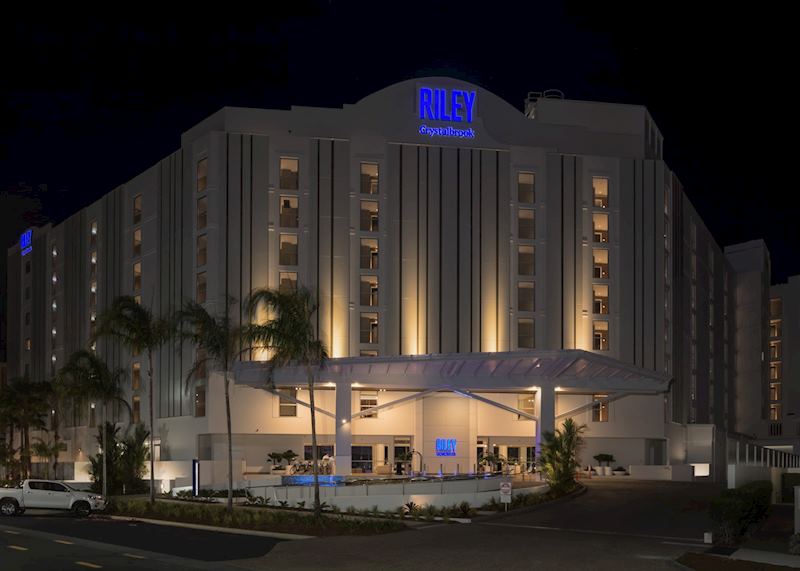
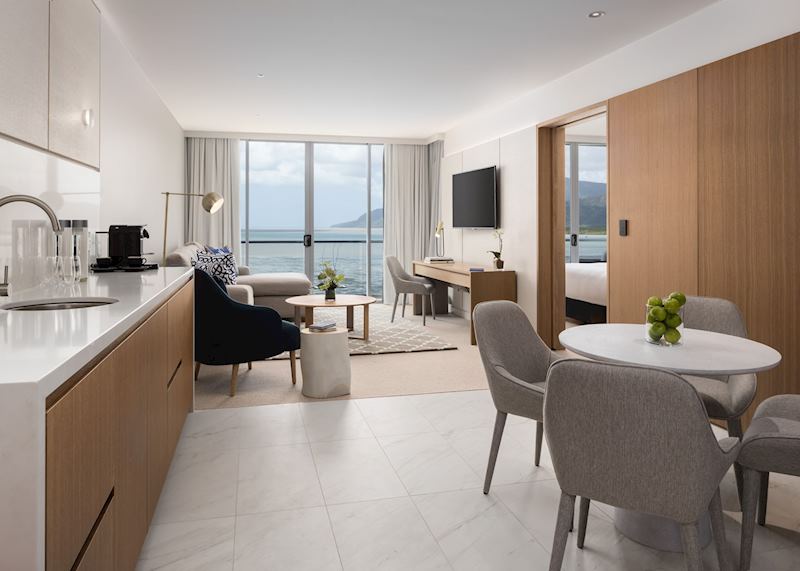
Best school vacations for travel to Queensland
While, Queensland has a warm and sunny climate year-round, it’s northwest corner is at its best during the long summer break, i.e. between May and September, when the humidity lessens. Travel in this period also means you can swerve “stinger season” (November to May) when a light wetsuit is needed to protect you from jellyfish in the coastal waters.

